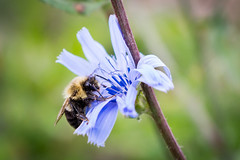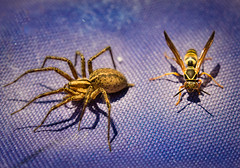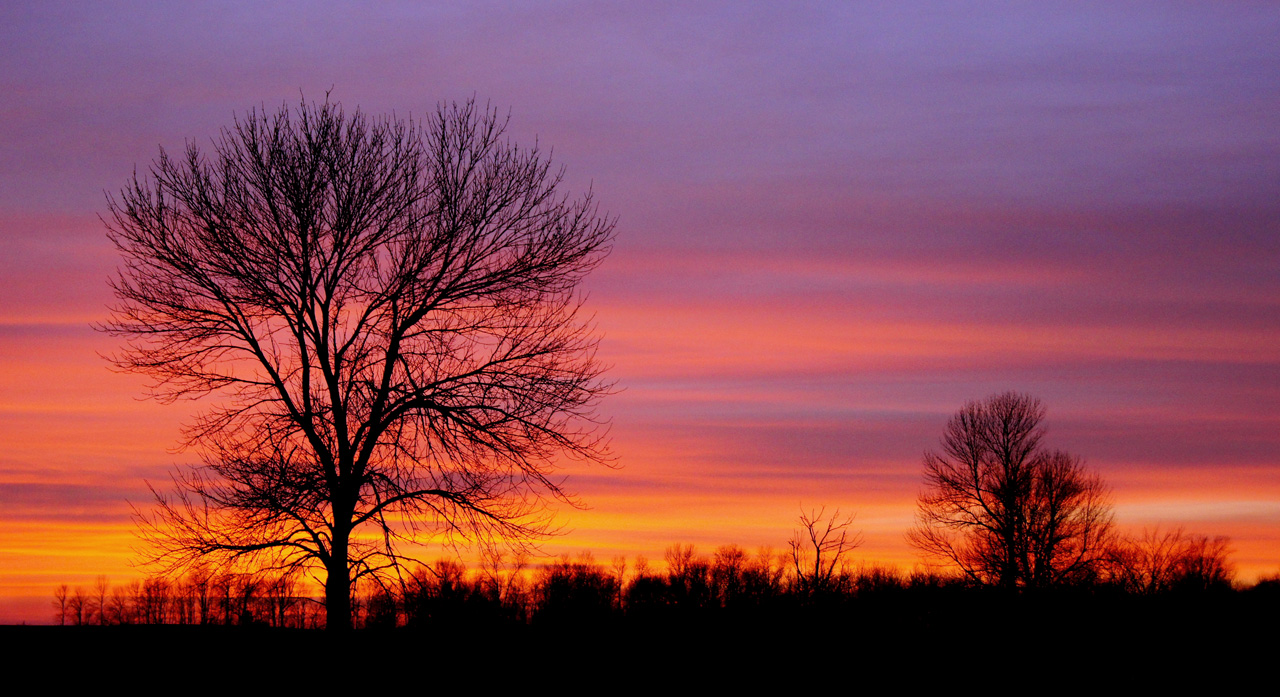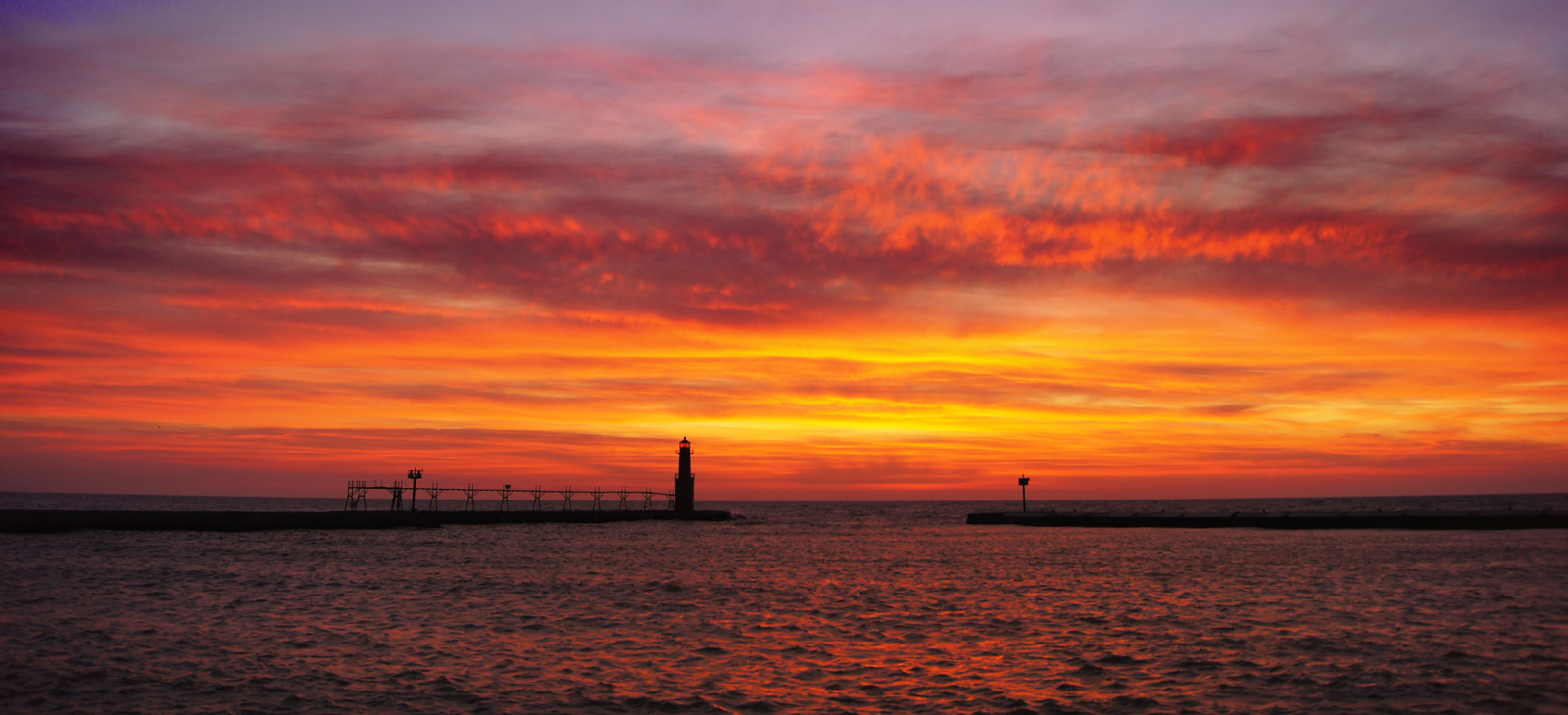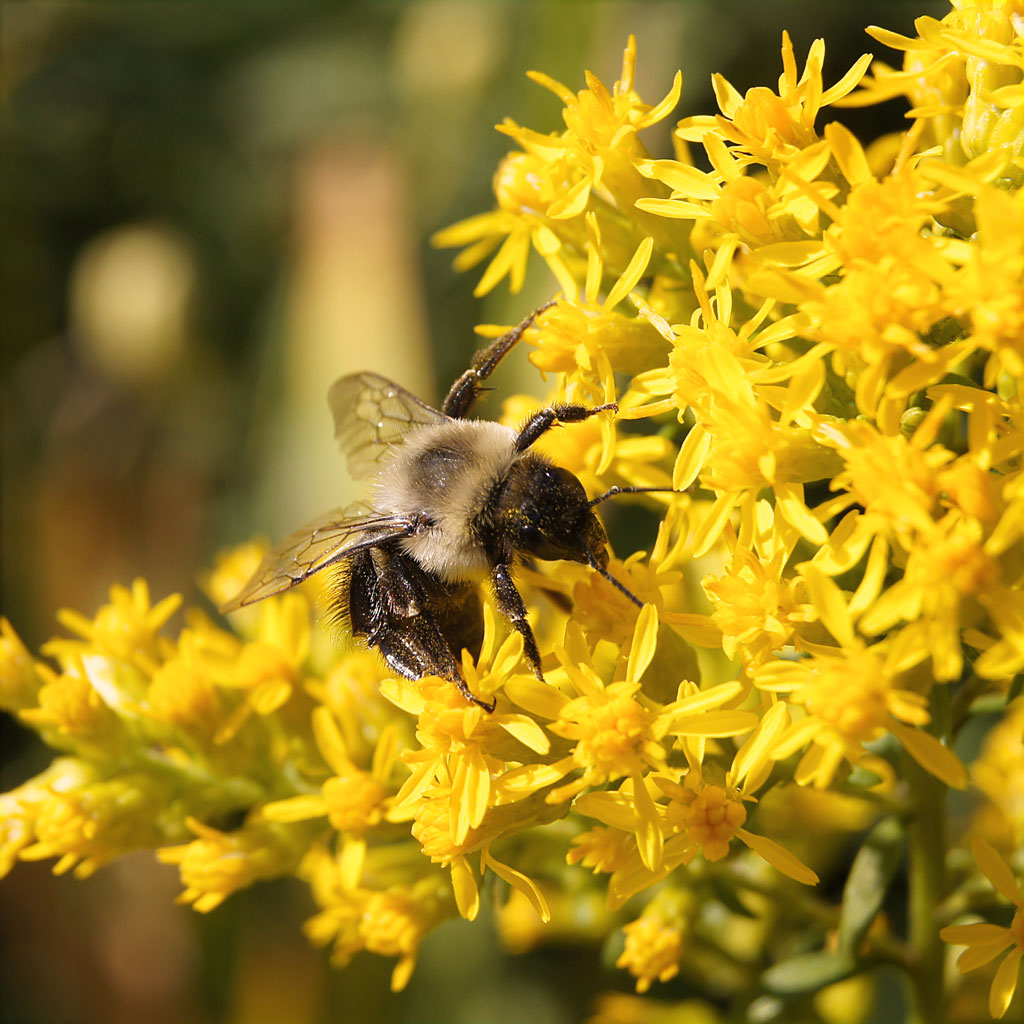Pops Digital
Wisps of Light
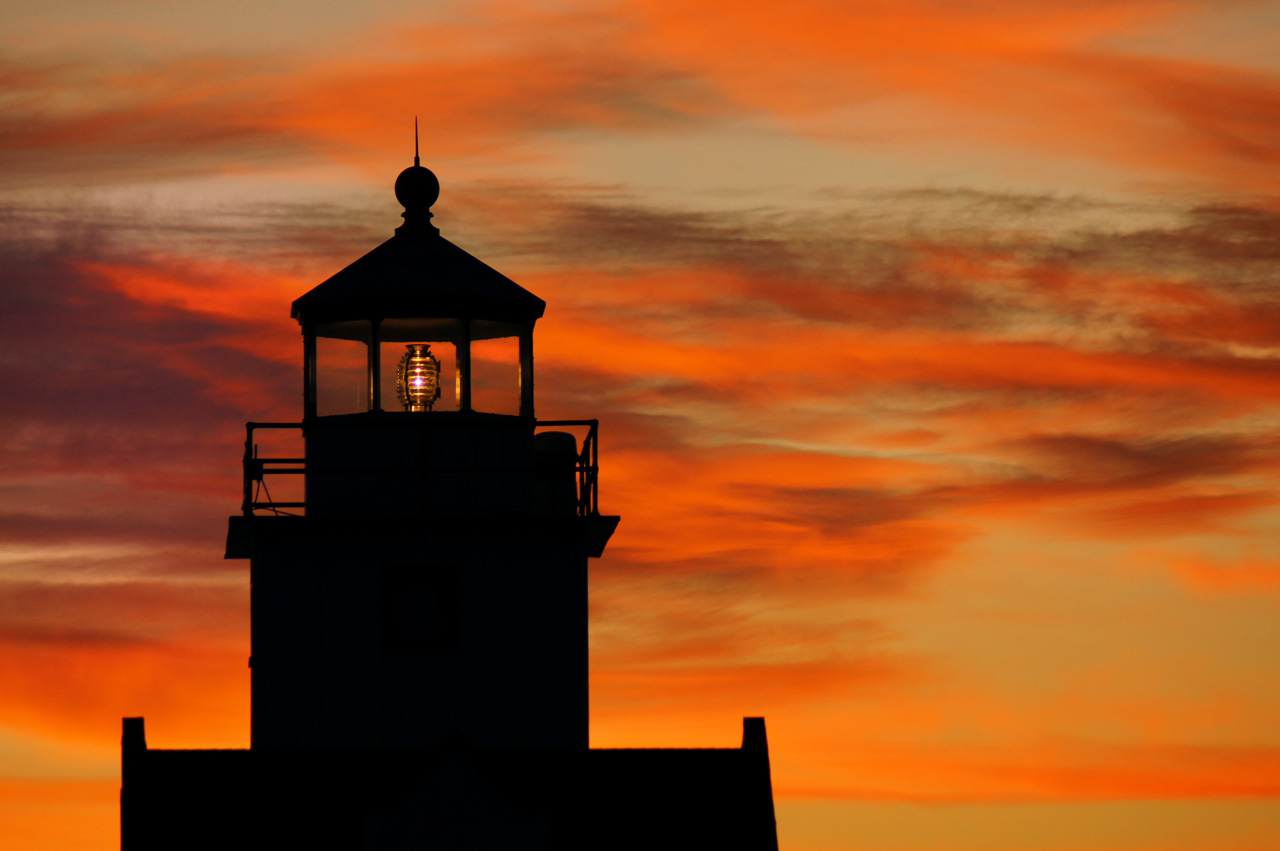 I’ve taken a lot of photos of the Kewaunee lighthouse, but none like this. This was a pre-sunrise shot focusing on the light of the lighthouse. The morning sky provided a dramatic background.
I’ve taken a lot of photos of the Kewaunee lighthouse, but none like this. This was a pre-sunrise shot focusing on the light of the lighthouse. The morning sky provided a dramatic background.
I have another, similar shot where the lighthouse isn’t all shadow. I’ll post it in a couple of days.
To get a better view of the lens on that light, click the photo. Feel free to share with friends.
Day’s End Elm
Cloudy Disposition
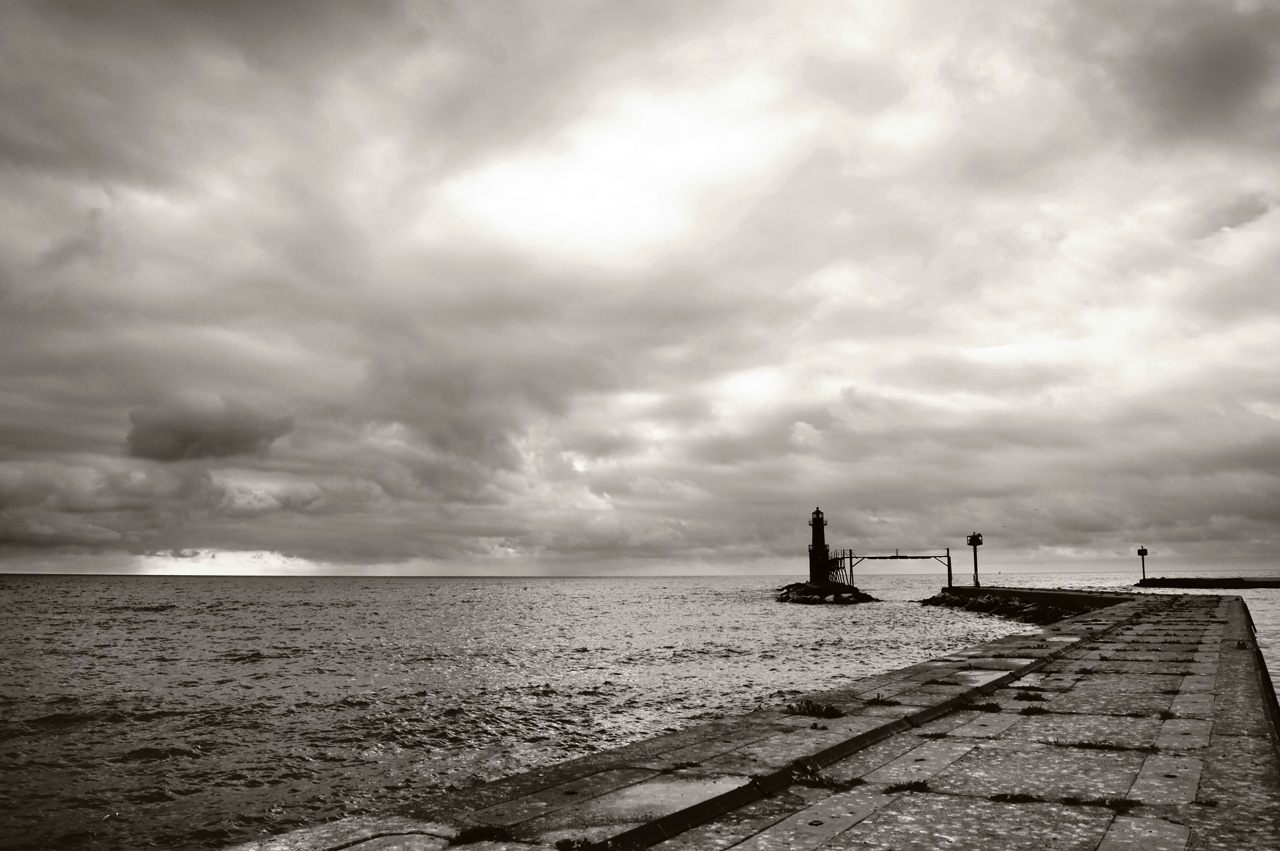
The distinctive, two-part pier of the Algoma, WI lighthouse stretches into Lake Michigan and a moody morning sky.
Those who have followed my photography will realize this is taken from a different location than I usually shoot the pier and lighthouse. Usually I’m somewhere on the southern side. From a southern angle, the pier looks like one solid protrusion. From this angle, you can see there’s a gap in the pier.
To get a better look at this image, click on it and it will open a new window with a larger view.![]()
Bright Future
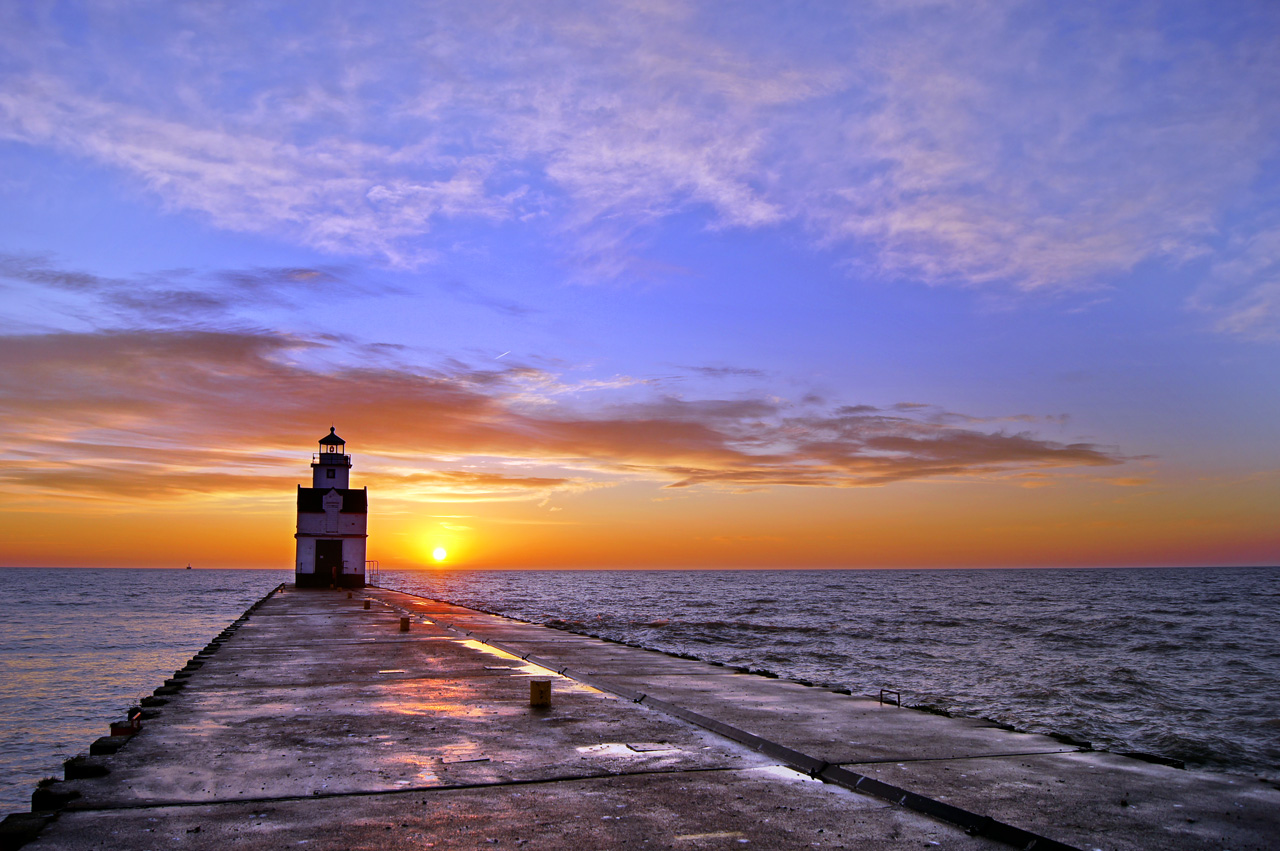 Here’s an image from my Thanksgiving weekend. While everyone at my home is taking advantage of the holiday by sleeping in, I’m trying to capture an image worth posting on this blog.
Here’s an image from my Thanksgiving weekend. While everyone at my home is taking advantage of the holiday by sleeping in, I’m trying to capture an image worth posting on this blog.
This is a shot of the sun rising over Lake Michigan, beyond the Kewaunee, WI lighthouse. The waters were rough and the pier was wet which gave a little bit of color to the normally drab, concrete pier.
To see a larger version of this photo, just click on it.
Waiting for Winter
Classical Glass
 For now we see as through a glass darkly, but then, face to face. 1 Corinthians 13:12
For now we see as through a glass darkly, but then, face to face. 1 Corinthians 13:12
A lot of my photography features colorful sunrises, sweeping landscapes, images of birds, bees and other glimpses of natural beauty. But, in reality, I just click the shutter whenever something catches my eye. That’s the reason for this photo.
This was a display of stemware on a department store shelf. The shapes, the light, the reflections, the refractions…all caught my eye.
This photo might not make a pretty postcard, but it’s an image I find very appealing.
Click the photo to see a larger version.
Sunrise of Hope
Gold Standard
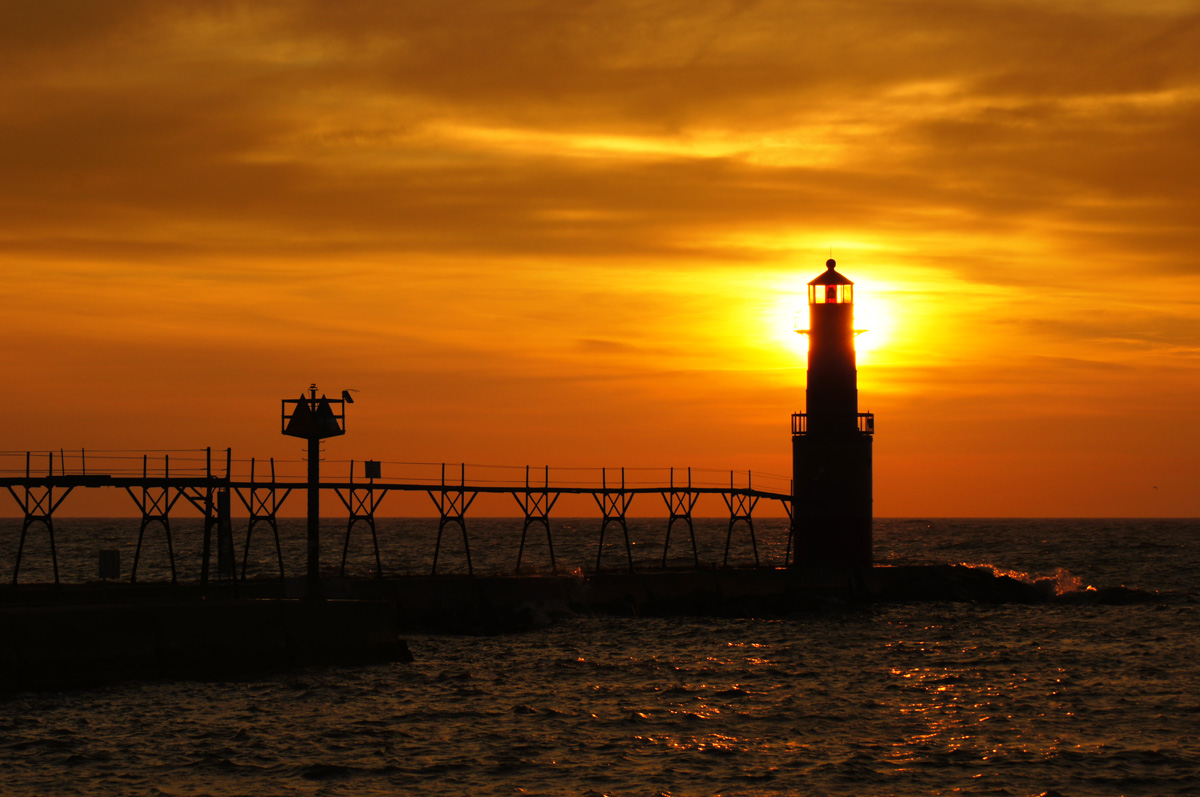 A rising autumn sun warmly caresses the Algoma Lighthouse. As you know, this is one of my favorite photographic subjects. Located at the harbor entrance to Algoma, WI, most folks refer to it as the Algoma Lighthouse. It’s also called the Algoma Pier Light or the Algoma Pierhead Lighthouse. I don’t know that you could consider it a true “lighthouse,” as it is not a habitable structure. It is listed by the United States Coast Guard as “Algoma Light;” number 20975 on their light lists.
A rising autumn sun warmly caresses the Algoma Lighthouse. As you know, this is one of my favorite photographic subjects. Located at the harbor entrance to Algoma, WI, most folks refer to it as the Algoma Lighthouse. It’s also called the Algoma Pier Light or the Algoma Pierhead Lighthouse. I don’t know that you could consider it a true “lighthouse,” as it is not a habitable structure. It is listed by the United States Coast Guard as “Algoma Light;” number 20975 on their light lists.
Here’s a little history and other details found on Wikepedia…
The lighthouse was first established in 1893 as a set of range lights. It was rebuilt in 1908 at which time it was a conical tower built of 5/16 inch steel plate, 8 feet (2.4 m) in diameter at the base and 7 feet (2.1 m) in diameter at the parapet. It stood 26 feet (7.9 m) high. In 1932 it was modified again and the entire structure was raised to a height of 42 feet (13 m) by placing the older tower on a new steel base 12 feet (3.7 m) in diameter. The original lens has been replaced by a plastic lens.
To see a larger version of this photo, just click on it.
On Golden Rod
Red Sky at Morning
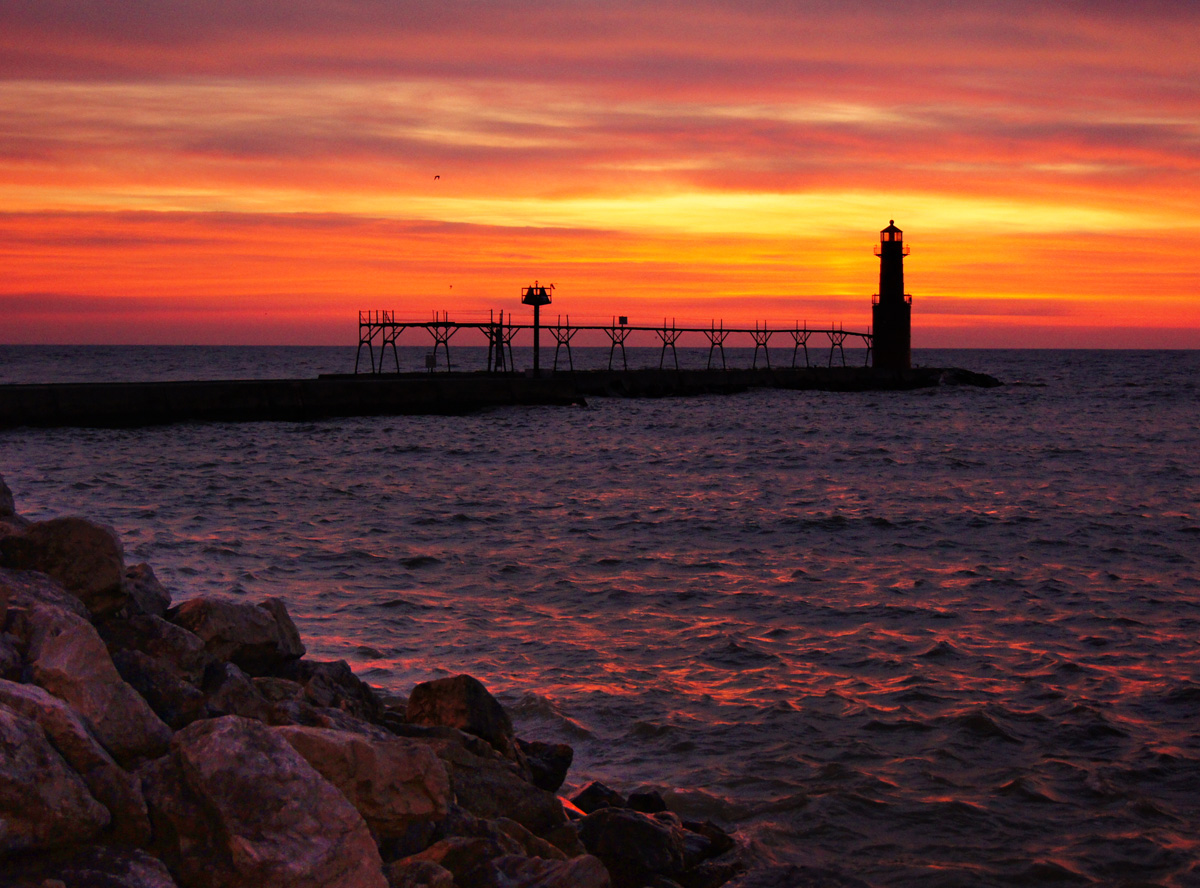 This scene reminded me of the the old adage “Red sky in morning, sailor’s warning. Red sky at night, sailor’s delight. ”
This scene reminded me of the the old adage “Red sky in morning, sailor’s warning. Red sky at night, sailor’s delight. ”
I don’t recall the weather turning bad on the day this photo was taken, but then I wasn’t sailing either. We did have overcast skies with a little drizzle.
I did a little research on the common saying and found this interesting comment on Wikipedia…
The rhyme is a rule of thumb for weather forecasting, dating back over 2,000 years, based on the reddish glow of the morning or evening sky, caused by haze or clouds related to storms in the region. Due to the rotation of the Earth, from west to east, storm systems tend to travel eastward across a local region of the globe. A reddish sunrise, caused by particles suspended in the air, often foreshadows an approaching storm, which will be arriving from the west, within the day. Conversely, a reddish sunset often indicates that a storm system is on the east side (opposite the sunset), travelling away from the viewer. A similar movement is noted all around the world, in both the northern and southern hemisphere. There are occasions where a storm system might rain itself out before reaching the observer (who had seen the morning red sky). However, for ships at sea, the wind and rough seas, from an approaching storm system, could still be a problem, even without rainfall.
To get a better view, click on the photo and a larger version will pop up.







